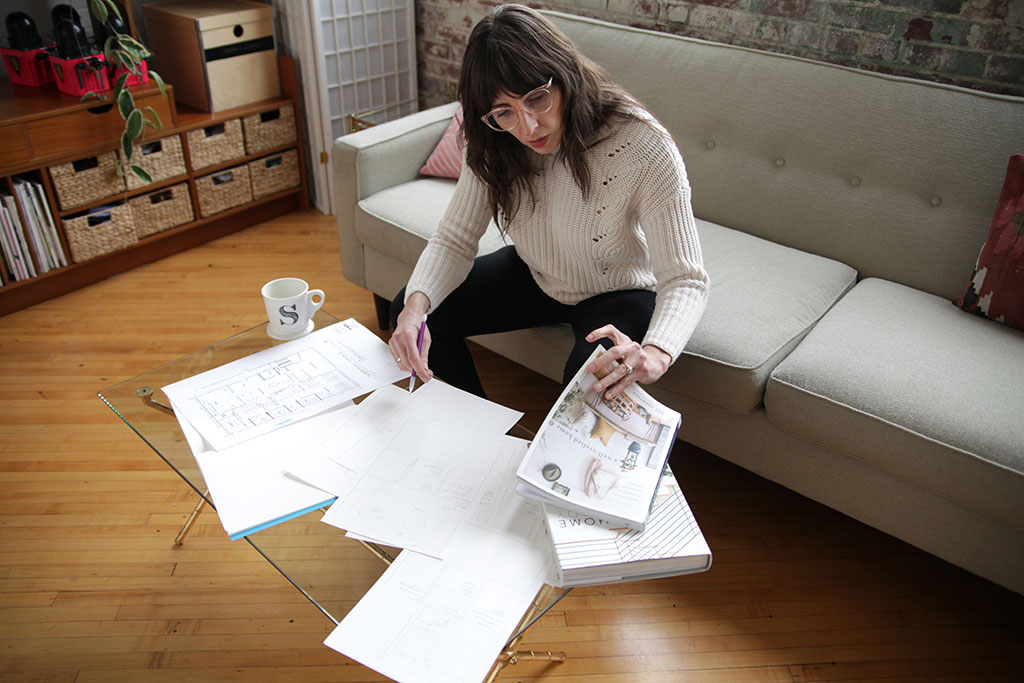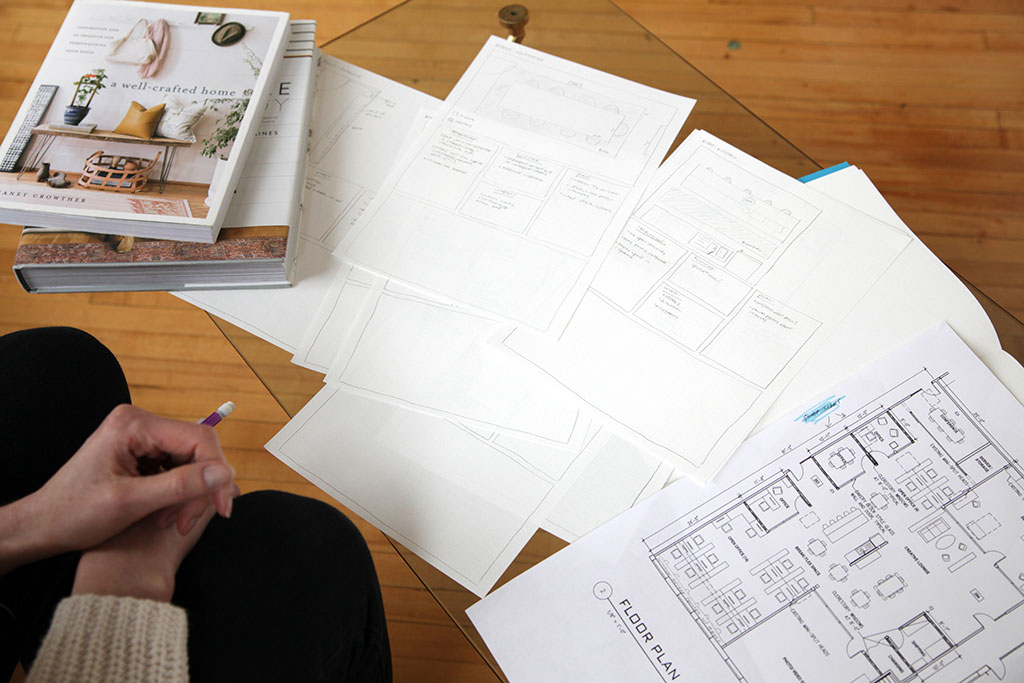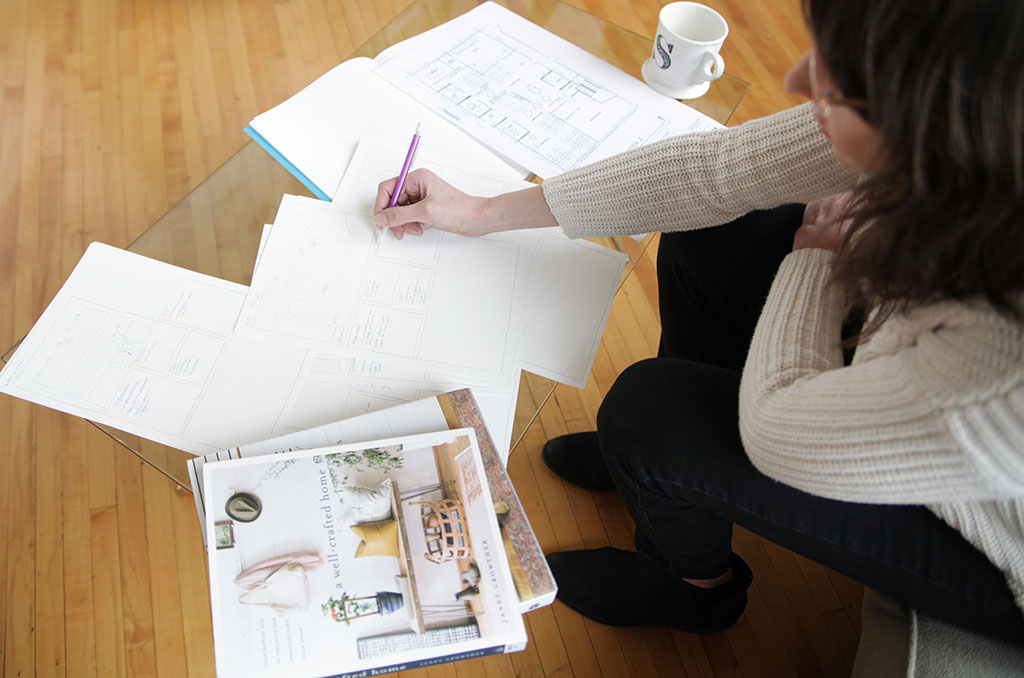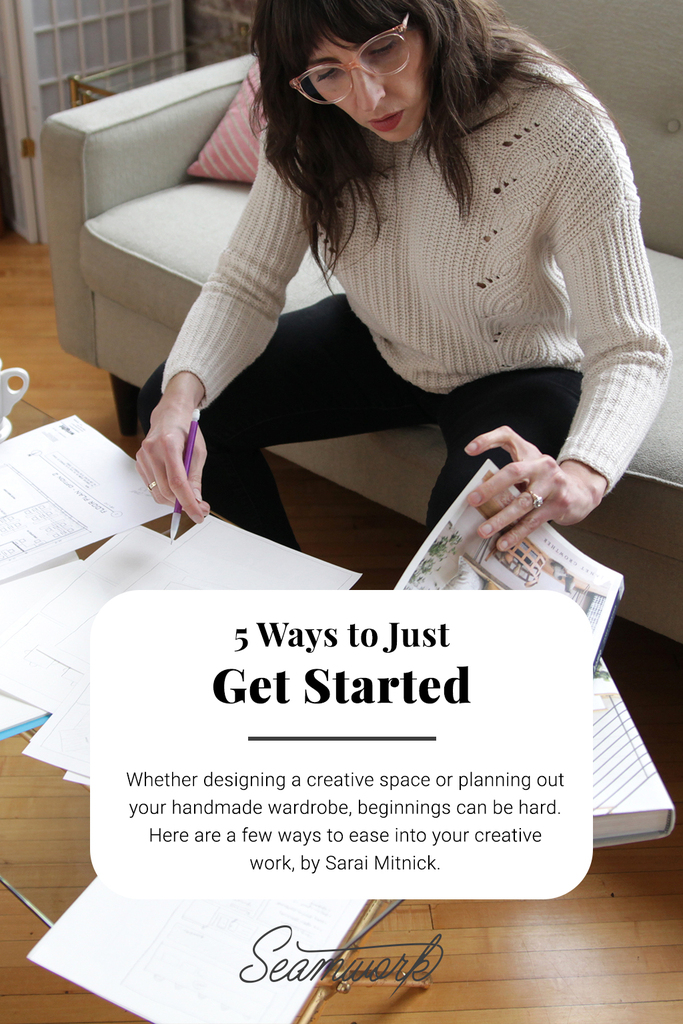
Beginnings can be hard. Whether you’re a writer staring at a blank page, a designer beginning a new collection, or a sewist with a big project in front of you, the motivation to move forward is often at its lowest at the very beginning of the journey.
Why is that?
The biggest problem seems to be the overwhelming possibilities. When it comes to a creative project, especially a large one, it can be difficult to know where to start. In fact, this is a reason many people who want to learn to sew give up. It’s a lot to learn, and though there may be an extraordinary number of resources out there, without guidance, where do you begin?
My own large project has been staring me down for the last couple of months: the redesign and expansion of our studio. Having never done a project like this before, I’ve often felt paralyzed. I didn’t know where to start or how to harness my ideas. I’d collected tons of inspiration, but what was I supposed to do with it all?
After sitting with it a while, I finally broke through and began. What helped was taking lessons I’d learned from other creative activities I do (like sewing and writing) and applying them to this totally new type of creativity.
I’d like to share the 5 lessons that have helped me to overcome paralysis and just get started:

1. Schedule a time.
When I haven’t had time to sew for a while, I will put it on my calendar and block out an entire day (or a half-day) to do something sewing-related. That might mean a trip to the fabric store and some cutting, or perhaps an entire day at the machine.
For the studio design project, I decided to focus an entire day on just getting started and sketching some initial plans. I wasn’t sure exactly what I’d get done or where it would take me, but I knew that if I didn’t block the time, it would never happen.
This is especially important at the beginning of a project when you’re feeling that sense of overwhelm, and you’re not quite sure what the first step is. The first step is: schedule it!
If you’re having trouble with even that first step, try reminding yourself why it’s important to you. Spending time on the studio design is important because having a beautiful and functional place to work is one of the most important things in the day-to-day wellbeing of everyone who works here, myself included.
For sewing, you might remind yourself that this is your time to take care of yourself and nourish your creativity. It’s important, and it deserves that spot on your calendar or on your weekend to-do list.
2. Make it feel good.
Once I had the time and told those around me that I’d be working on this all day, I grabbed my pad of graph paper, drawing tools, and some inspiring books and moved away from my work desk. I sat on our sofa with some snacks and a cup of tea, creating a little quiet creative space in the corner for myself.
Taking the time and energy to make this temporary creative space felt good, and I was able to approach it with a more lighthearted, relaxed attitude.
That’s why I always try to encourage sewists to have happy rituals around their sewing. Because starting can be so tough, rituals that feel good and get you in the mood to create provide a soft transition into a new activity.

3. Follow a process
For weeks, I put off working on our studio design simply because I didn’t know how to start. There are so many things to consider, from aesthetic choices to practical needs to cost. Where does an amateur like me begin?
Then I picked up Joanna Gaines’s decorating book, Home Body. Apart from the gorgeous classic spaces she’s famous for creating, the book also had a simple design template with spaces to sketch, as well as list what you need to troubleshoot, invest in, eliminate, and plan.
Having a template to work with gave me the confidence to move forward. Even if it wasn’t exactly what I needed, I could work with it and evolve it over time as I discovered more and more about my process.
This is similar to what many people find with Design Your Wardrobe. It’s a huge help to have a starting point with your process. If you don’t have your own process quite yet, why not borrow from someone else and adapt it as you see fit?
4. Divide it into chunks
The most helpful part of using a template was that it naturally divided everything into smaller pieces.
First, I had a page for each individual space within the studio, like the sewing room, offices, and kitchen. Then, each one was divided into neat lists that summarized the work that needed to be done. It felt manageable for the first time ever.
It’s the same way with sewing. By dividing a big project up into chunks, I feel less pressure to work until my eyes are strained, and my back is aching, and _still_ feel unsatisfied with the progress I’ve made. When I’ve divided it up into a few steps like “cutting fabric,” “sewing the bodice,” and “closures and hemming,” I put less pressure on myself to work straight through without stopping.
This leads to a positive feedback loop because I feel accomplished when I finish a chunk and look forward to returning.

5. Create a draft
I recently asked our team to do a bit of a creative writing exercise, drafting up a day in the life in the future to help create a vision of what they wanted from their careers. It was a fun exercise to kick off the new year, but more than a bit daunting.
The first thing I asked was that they write DRAFT in big, bold letters at the top. By recognizing that it’s just a draft and doesn’t have to be perfect, you feel the freedom to explore, mess up, and just keep going.
Sure, we all want great outcomes from our projects, especially when we’re spending money on them. But giving yourself permission to experiment can open up the possibilities and help you learn.
As I created my initial design plans, I tried to think of them as drafts or notes. They were a place to play and explore before buckling down and doing the hard work of budgeting and designing.
With sewing, you may sometimes set aside some fabric to practice a technique before trying it out on your garment. Or, you might create a wearable muslin that you don’t expect to be totally perfect. There are many ways you can give yourself permission to make less-than-perfect things on your way to getting it right for you.
Get started
If you find yourself struggling with a big project—whether it’s designing your wardrobe or tackling your first pair of pants – give yourself a little grace. Instead of haranguing yourself to just get started, try making it easier and more enjoyable with a little fun, practice, and process.


